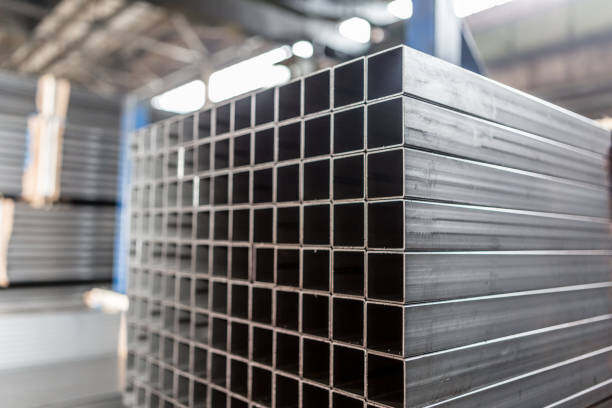Thin materials have become increasingly prevalent in modern manufacturing, with applications spanning automotive, aerospace, home appliances, and construction industries. While thin materials offer advantages like reduced weight and improved efficiency, welding them presents unique challenges. Issues such as warping, excessive spatter, and burn-through can hinder productivity and weld quality. In this article, we will explore practical strategies and techniques for achieving high-quality, distortion-free welds when working with thin materials.

I. Challenges of Thin Metal Welding
Before diving into the solutions, it’s essential to understand the challenges inherent to thin metal welding. Thin materials, typically ranging in thickness from 0.4 mm to 4.8 mm, are more susceptible to:
Distortion: High heat input can cause the material to warp or deform.
Burn-through: Insufficient material thickness makes it easier for the arc to penetrate completely, leading to unacceptable holes.
Spatter: Higher heat and incorrect shielding gas settings can result in excessive spatter.
Material Dependence: Different materials (carbon steel, stainless steel, aluminum, galvanized steel) require unique approaches to welding.
Addressing these challenges requires careful selection of equipment, techniques, and materials. Let’s explore each component in detail.
II. Pre-Welding Considerations for Thin Metal Welding
1. Base Material Type
The type of base material significantly influences the welding process. Common materials include:
Carbon Steel: The most commonly welded material, suitable for general-purpose applications.
Stainless Steel: Requires careful control of heat and shielding gas to prevent oxidation and porosity.
Aluminum: High thermal conductivity and the presence of an oxide layer make aluminum particularly challenging.
Galvanized Steel: The zinc coating can release harmful fumes and create porosity if not managed properly.
2. Material Thickness
The thickness of the material dictates the choice of welding process and parameters. For example:
Ultra-Thin Materials (≤1.6 mm): Require low heat input processes like Short-Circuit GMAW (MIG) or Pulse GMAW.
Thicker Materials (1.6 mm – 4.8 mm): Can tolerate slightly higher heat input but still require careful parameter control.
3. Welder Skill Level
Welding thin materials demands a high level of operator skill, particularly for processes like TIG welding (GTAW). The precise control of heat input and arc manipulation is critical to avoiding burn-through and distortion.
4. Equipment Selection
The choice of welding equipment and mode (e.g., pulse, short-circuit) has a significant impact on weld quality. For example, a synergic pulse GMAW system can provide the necessary precision for thin materials.
III. Best Practices for Welding Carbon Steel Thin Materials
Carbon steel is the most widely used material in thin metal welding. Below are some best practices for achieving high-quality welds:
1. Gas Metal Arc Welding (GMAW)
GMAW is the preferred process for welding thin carbon steel due to its versatility and efficiency.
Short-Circuit GMAW (SCT) Mode: Ideal for ultra-thin materials (≤1.6 mm). Use a smaller diameter electrode (e.g., 0.6 mm E70-S2, S3, or S6) and a shielding gas mixture of 75% argon and 25% CO2. The SCT mode provides low heat input, reducing the risk of burn-through.
Pulse GMAW: For thicker materials (1.6 mm – 4.8 mm), pulse GMAW offers better control over heat input. A high argon shielding gas mixture (e.g., 95% argon/5% CO2) improves arc stability and reduces spatter. While pulse GMAW equipment is more expensive, the precision and control it offers make it a worthwhile investment.
2. Flux-Cored Arc Welding (FCAW)
FCAW is less commonly used for thin materials due to its higher heat input and the need for slag removal.
Advantages: No external shielding gas is required, making it suitable for field welding.
Disadvantages: Inferior weld quality compared to GMAW and higher spatter levels.
3. Gas Tungsten Arc Welding (GTAW)
GTAW is ideal for high-precision, low-volume applications where spatter and slag are not acceptable.
Advantages: Highest weld quality, perfect fusion, and minimal distortion.
Disadvantages: Higher operator skill requirements, lower productivity, and higher costs.
IV. Welding Stainless Steel: Matching Consumables and Processes
Stainless steel welding shares many similarities with carbon steel welding, but requires additional considerations:
1. Electrode Selection
The electrode must match the base material grade. For example:
2. Shielding Gas
3. Process Selection
For very thin stainless steel materials, GTAW is the preferred process. Use a smaller diameter tungsten electrode (e.g., 3/32 inch) and keep the welding current as low as possible to minimize distortion.
IV. Welding Aluminum: Addressing Oxidation Challenges
Aluminum welding is complicated by the material’s oxide layer, which can prevent proper fusion. Below are strategies for overcoming these challenges:
1. Pre-Weld Preparation
2. Electrode Selection
3. Shielding Gas
Aluminum welding typically uses a mixture of helium and argon (e.g., 50% helium/50% argon). However, due to the high cost of helium, many shops opt for 100% argon shielding gas.
V. Galvanized Steel Welding: Minimizing Porosity
Welding galvanized steel can lead to porosity and poor weld quality due to the zinc coating. The following strategies can help mitigate these issues:
1. Shielding Gas Selection
2. Welding Parameters
3. Electrode Selection
Conclusion
Welding thin materials is a delicate and complex process that requires careful coordination between the welder, equipment, and materials. By selecting the right welding process, optimizing shielding gas configurations, and improving operator skills, we can overcome the challenges of thin metal welding.
As automation and advanced welding technologies continue to evolve, thin metal welding will become more efficient and reliable. At Megmeet Welding Technology, we are committed to providing high-quality welding equipment and technical support to empower manufacturers in achieving their goals.
Have you encountered particularly challenging issues in thin metal welding? Share your experiences and challenges in the comments below, and we will provide you with professional solutions to help you overcome them.
Related articles:
1. Welding Methods of Stainless Steel Sheet (0.1~3.0mm thickness)
2. How to TIG Weld Thin Steel Tubing with Precision and Expertise?
3. 9 Tips for Welding Thin Gauge Sheet Metal
4. Pulsed TIG Welding — Weld Thin Like a Pro
5. Tips for Setting MIG Welding Parameters for Thin Materials




